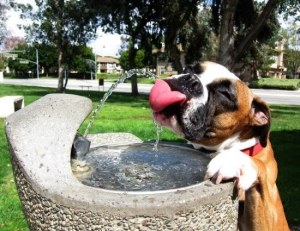Recently one of our member’s dog has been diagnosed with diabetes. This made us realize that Diabetes in dogs & cats is one of the lesser known disease. This incident inspired this blog basically. Although the diabetes is not curable yet it is treatable. Aside from older dogs, bigger dogs are more susceptible to dog diabetes than smaller breeds. Some other risk factors are gender, diet, age and weight. Also Diabetes in dogs is a hereditary disease. Even cats are susceptible to diabetes. We have tried to summarize some symptoms of diabetes in dogs & cats: 
- Weakness or Fatigue – Diabetes can cause wasting of back muscles or weakness in the back legs of cats. With dogs there may just be a general sense of lethargy, being less active, or sleeping more.
- Increased thirst – Drinking more water than usual, known as polydipsia, is an early warning sign of diabetes.
Increased Urination – Urinating more frequently, producing more urine throughout the day, or having “accidents†in the house may mean your cat or dog has developed polyuria, another early warning sign of diabetes that goes hand in hand with polydipsia.- Increased Hunger – If your cat or dog suddenly acts as if it is always starving, despite eating the usual amount (known as polyphagia), and maintains or loses weight despite increased food intake, this can be a sign of diabetes as well.
- Sudden weight loss – Though a diabetic pet may show signs of being hungrier than ever, sudden weight loss is a common occurrence because diabetes can cause an increased metabolism.
- Obesity – Obesity can actually cause diabetes to develop; therefore, if your pet is obese you should keep an eye on it to determine if it is developing any symptoms of diabetes.
- Thinning or dull hair – Thinning, dry, or dull hair, particularly along the back. Thinning hair is generally a symptom of some illness, diabetes included, so it is best to visit your veterinarian to determine the cause.
- Cloudy eyes – A common complication of diabetes in dogs is cataracts, or cloudy eyes. Cataracts can lead to blindness if not monitored.
- Depression – A later sign of diabetes in dogs and cats is ketoacidosis, metabolic acidosis caused by the breakdown of fat and proteins in the liver in response to insulin deficiency. Ketones in the body in high amounts are toxic, and this imbalance in the body of your pet can cause depression.
- Vomiting – Another side effect of ketoacidosis, if your pet’s diabetes has escalated to this point before it’s been recognized, is vomiting. Ketoacidosis is more commonly found in older pets and in females. Dachshunds and Miniature Poodles are also predisposed to it.
We strongly recommend you to take your pooch to the vet immediately if you notice any of these symptoms. And if in case your dog is suffering from diabetes then no need to get discouraged as there are many incidences when an early diagnosis has led to a relatively longer, normal life for the dog. With few extra precautions regarding the diet of the dog and medicines will help you and your best friend sail through this.
For other useful articles regarding Cat & Dog health please visit our website www.tailwaggers.in
Related articles
Diabetes in Pets is on the Rise (mypetsaid.wordpress.com)
What if your diabetic dog is lost? (livingwithadiabeticdog.blogspot.com)- http://www.thebark.com/content/preventing-and-treating-canine-diabetes
没有评论:
发表评论